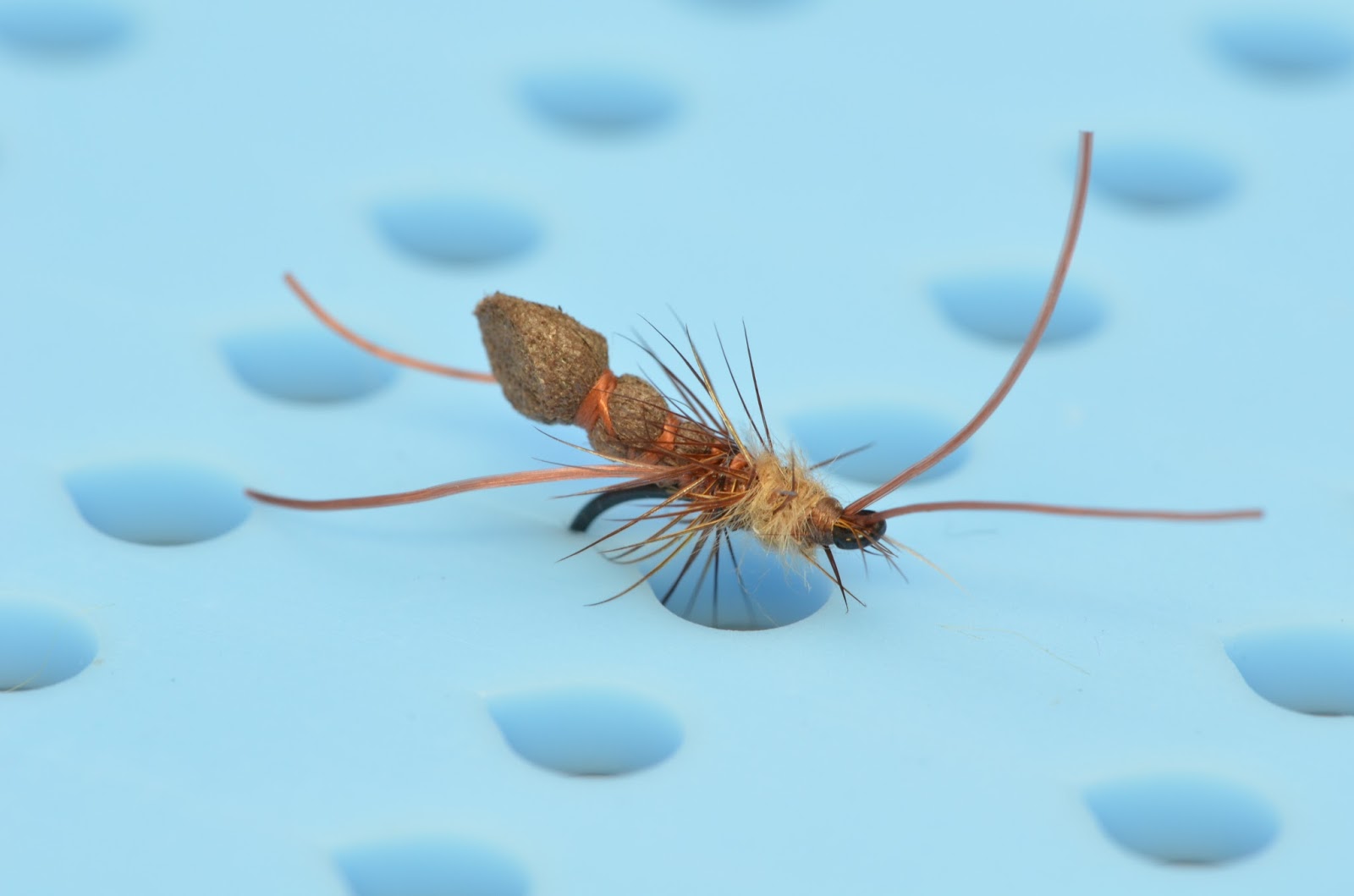Trout Love Sipping Ants Whenever They Are Readily Available.
Feels good to be back on a roll with things here, hopefully if all goes as planned I can keep this up for a while. As a result of my last post, I received several inquiries on the ant pattern in one of the photos. As luck would have it, I have new video on that very pattern detailing the flies construction. A while back you all might recall the Tiny Dancer Caddis Pupa video for our local favorite and beloved hatch of winter caddis.

The Tiny Dancer Pupa Was The Inspiration For the Highlighter Ant
The pattern was primarily designed as an alternative for when the trout got a bit picky and would refuse the old foam emerger that has become an absolute staple in the flyboxes of many. The dancers construction was built around the premise of an extended foam body via the use of the J. Son extended body pins; a rather genius device that allows for the relatively easy construction of extended body flies.
More Movement Rich Goodness Here
Well, the Highlighter Ant came to fruition largely in part as a result of staring at the Tiny Dancer one afternoon, and recognizing that with a few modifications, I actually had one heck of a nice ant pattern. We all know that ants and various other terrestrials can often be very prolific accessory insects that trout will habitually key in on at various times of the year. Late summer and early fall after a rain, winged ants will take flight almost like clockwork and several will wind up on the surface of our waterways. Trout will typically key in on them and gorge on these little morsels as they are easy pickings once they fall they are caught in the water. Often, the emergence's occur anywhere from 6-48 hours after the last of the rains have subsided and things begin to dry out.
My hook of choice is the Partridge Caddis Pupa, and I tie this particular pattern in sizes ranging from 14-18. Although it will not cover those often minuscule sized ants in the 20-28 range, it will however cover just about anything else roughly 75% of the time. And, as usual, don't let a smaller sized emergence of ants deter you from casting something a shade larger in stature, as this guy will often fool a fish or two even when the naturals are smaller. My favorite size is hands down the 18, but tie a few up for yourself and figure out what works best for you. You can easily omit the wing in the tying process to account for those wingless ants you encounter, but if your like me, I have a fondness for fishing ants with wings more so than fishing those without. Enjoy the video and throw a few of these in your box for next season, I am fairly certain that you will be happy that you did.
-RS-

